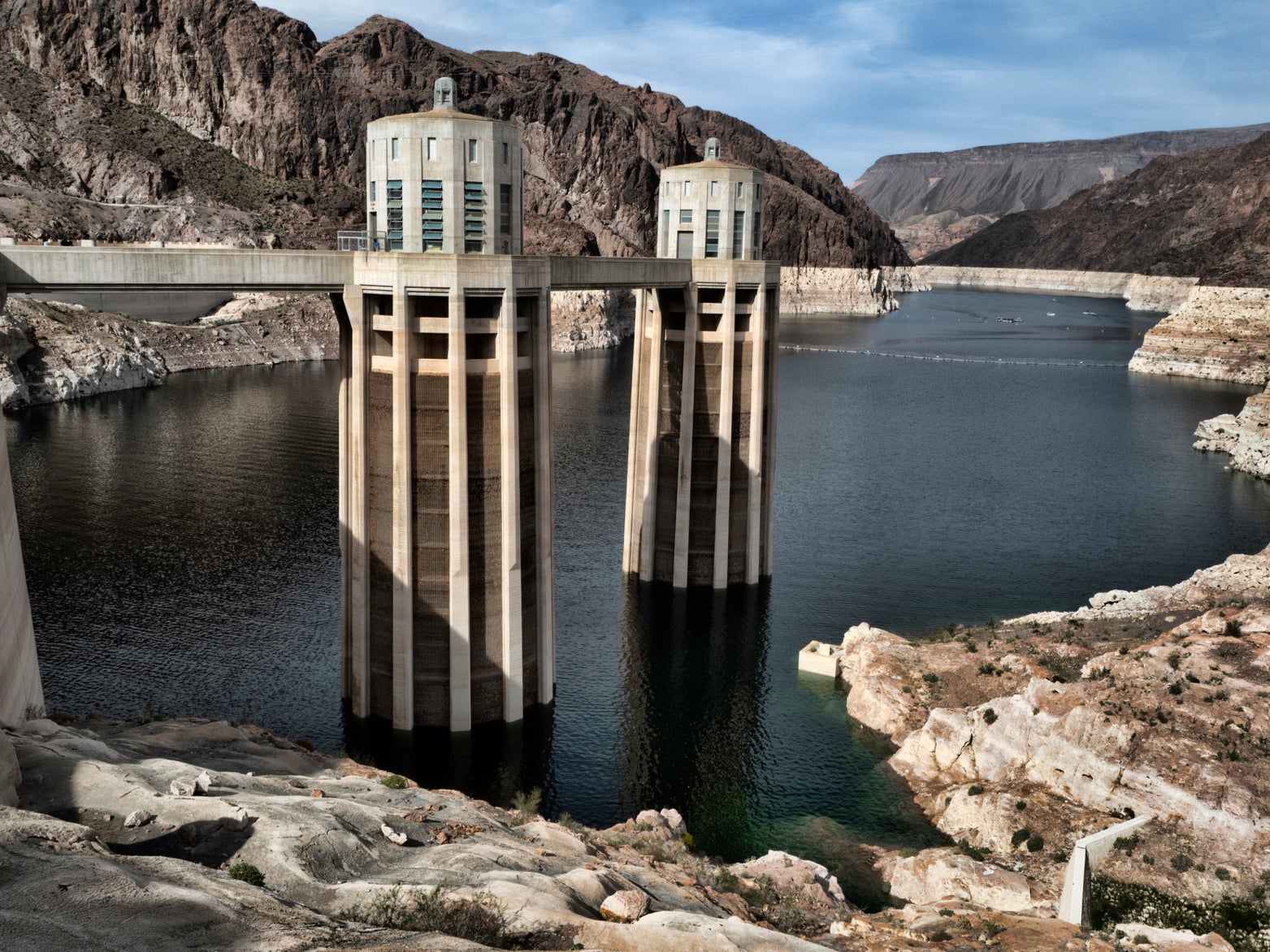This website uses cookies so that we can provide you with the best user experience possible. Cookie information is stored in your browser and performs functions such as recognising you when you return to our website and helping our team to understand which sections of the website you find most interesting and useful.

Water levels in the two largest man-made reservoirs in the US could dip to critically-low levels in the next five years, jeopardizing the steady flow of Colorado River water that more than 40 million people rely on in the American West.
After a relatively dry summer, the US Bureau of Reclamation released models on Tuesday suggesting looming shortages in Lake Powell and Lake Mead — the reservoirs where Colorado River water is stored — are more likely than previously projected.
Compared with an average year, only 55 per cent of Colorado River water is flowing from the Rocky Mountains down to Lake Powell on the Utah-Arizona line. Due to the below-average runoff, government scientists say the reservoirs are 12 per cent more likely to fall to critically-low levels by 2025 than they projected in the spring.
“This is a pretty significant increase over what was projected in April due to the declining runoff this year,” hydrologist Carly Jerla said.
The forecast could complicate already-fraught negotiations between Arizona, California, Colorado, New Mexico, Nevada, Utah, Wyoming and Mexico over future shares of the river that supplies their cities and farms.
Those talks will draw up new agreements by 2026 over use of the river that’s under siege from climate change and prolonged drought.
Some urban and agricultural water users have been forced to conserve water to secure the river long term, but it remains overtapped. And as cities like Phoenix and Las Vegas keep growing, the region is only getting thirstier.
“We know that warmer temperatures have contributed to the drought of the last 21 years, and we know that they have exacerbated it,” Bureau of Reclamation Commissioner Brenda Burman said.
Unlike the 24-month projections that the agency uses to allocate water to the seven states and Mexico, the models released on Tuesday simulate various weather and usage patterns to help water users prepare for different scenarios.
Scientists use what’s called the Colorado River Simulation System to project future levels of the two reservoirs. They employed “stress testing” techniques based on river flows since 1988 to determine potential shortages if drought conditions persist.
Arizona, Nevada and Mexico agreed to cuts for the first time under a drought contingency plan signed last year. The water level in Lake Mead sits at 1,083 feet (330 metres). When projections drop below 1,075ft (328m), Nevada and Arizona will face deeper cuts mandated by the plan.
Stress test models suggest a 32 per cent chance that Lake Mead will fall below 1,075ft by 2022 and a 77 per cent chance by 2025. The model’s median estimates indicate Lake Mead will drop by 35ft (11m) by 2026.
The water level in Lake Powell is at 3,598 ft (1,097m), and estimates suggest it could drop by 50 ft (15m) by 2026.
Burman said the models provide valuable information to cities and farms preparing for the future as drought persists and average temperatures trend upward. She said drought contingency plans are an effective mechanism to address the projected shortages — for now.
“I think what the projections are showing us is we have greater uncertainty than we did last year,” she said.



 Africana55 Radio
Africana55 Radio 
